Oct. 12 show
Coliseum and Clowes Hall histories
The Coliseum at the Indiana State Fairgrounds - site of some of the most joyous and colorful events in Indy history, as well as some of the most tragic episodes - is undergoing a $63 million renovation.
Clowes Hall, which opened in 1963 at Butler University amid great uncertainty about its chances for success, is celebrating its 50th anniversary.
What better time to explore the histories of these two landmark venues?
Chapters in their stories include concerts in 1964 by the Beatles; an explosion during an ice show on Halloween night in 1963 that remains among the most massive tragedies in state history; performances by household names ranging from Bob Hope, Judy Garland and Liberace to the Bolshoi, and public speakers including Coretta Scott King, Robert Kennedy Jr. and Indy native Kurt Vonnegut.
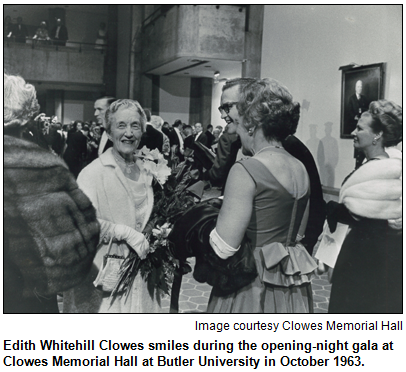 To explore the events, crises, celebrations and backstage stories that have unfolded at the Coliseum and Clowes, Nelson will be joined in studio by three guests. They are Justin Armstrong, director of advancement at the Indiana State Fair Foundation, James Cramer, community relations manager at Clowes, and Christine Thacker, the Clowes archivist.
To explore the events, crises, celebrations and backstage stories that have unfolded at the Coliseum and Clowes, Nelson will be joined in studio by three guests. They are Justin Armstrong, director of advancement at the Indiana State Fair Foundation, James Cramer, community relations manager at Clowes, and Christine Thacker, the Clowes archivist.
The Coliseum, which opened in the fall of 1939, was constructed under Franklin D. Roosevelt's Public Works Administration. Its 11,000 seating capacity made the Coliseum the largest event facility in Indy then.
Three years later, the venue hosted its first basketball game, during which the Indiana High School All-Stars defeated the Kentucky High School All-Stars by one point. In 1967, the Coliseum became the home court of the Indiana Pacers, then playing in (and, eventually, three-time champions of) the American Basketball Association.
According to guests James and Christine, the opening of Clowes was a "huge gamble - they bet the farm." But the venue went on to host appearances by Barbra Streisand, Whitney Houston, John Travolta and other entertainers who either were (or became) icons.
To celebrate the 50th anniversary of Clowes, artwork by Hoosiers will be displayed as part on an on-going "mosaic of visual art" throughout the 2013-14 season. 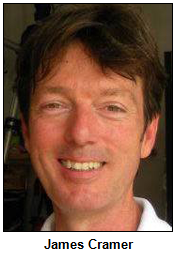 The public is invited to a free open house and mosaic unveiling on Oct. 20 at 4 p.m. For more info about other 50th-anniversary festivities, visit cloweshall.org.
The public is invited to a free open house and mosaic unveiling on Oct. 20 at 4 p.m. For more info about other 50th-anniversary festivities, visit cloweshall.org.
At the renovated Coliseum, which is scheduled to reopen next summer, the Art Deco exterior is being restored. The new interior will include double-tiered seating, a new video scoreboard and a modern sound system.
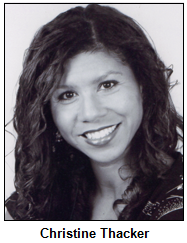 If the Coliseum endured wear and tear over the decades, it shouldn't be a shocker, given some of the events that were staged in the venue. In 1974, the Coliseum was the setting for the first - and largest - indoor tractor pull in the country.
If the Coliseum endured wear and tear over the decades, it shouldn't be a shocker, given some of the events that were staged in the venue. In 1974, the Coliseum was the setting for the first - and largest - indoor tractor pull in the country.
Longtime listeners of Hoosier History Live! will recall that we explored the 1963 Holiday on Ice explosion at the Coliseum during a show in October 2008 with Lawrence "Bo" Connor, a retired managing editor of The Indianapolis Star. He reported from the scene of the tragedy, during which 74 people were killed and about 400 more were injured.
And during another show, we delved into the Beatles appearances with two guests who, as ardent teenage fans of the wildly popular "Fab Four," attended their 1964 concerts at the Coliseum. Both guests recalled they could not "hear a note of music" because of the screaming teens.
 Both the Beatles concerts and the tragic explosion will be explored during our upcoming show. A plaque near the Coliseum's main doors memorializes the victims of the explosion, which occurred 50 years ago this month. Propane - being used to keep popcorn warm - leaked from a faulty valve into an unventilated room beneath the grandstands. The blast hurled a 50-foot section of spectators, chairs and concrete into the air and on the ice.
Both the Beatles concerts and the tragic explosion will be explored during our upcoming show. A plaque near the Coliseum's main doors memorializes the victims of the explosion, which occurred 50 years ago this month. Propane - being used to keep popcorn warm - leaked from a faulty valve into an unventilated room beneath the grandstands. The blast hurled a 50-foot section of spectators, chairs and concrete into the air and on the ice.
That same year of 1963, Clowes Hall opened. Built for $3.5 million and designed by a partnership that included Indianapolis architect Evans Woollen, the performing arts hall became the home of the Indianapolis Symphony Orchestra for 20 years. (The orchestra moved to Circle Theatre on Monument Circle in 1984 following a major renovation of what is now known as the Hilbert Circle Theatre.) As part of the 50th anniversary celebrations, the symphony will return to Clowes with a Pixar in Concert performance on Oct. 27.
As the venue for productions ranging from touring Broadway shows to ballet, opera and pop concerts by the likes of Duke Ellington, Big Bird and the Four Tops, Clowes Hall "ushered in a new era in the city's cultural history," as the Encyclopedia of Indianapolis puts it.
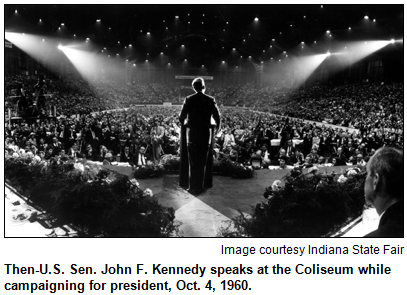 According to a recent Indianapolis Monthly article, the Clowes staff arranged for a Rolls Royce to shuttle opening weekend performer Bob Hope. But the famous comedian was a spokesman for Chrysler and could not be seen in any other vehicle, according to an anecdote that the magazine attributes to our upcoming guest Christine Thacker. During our show, Nelson will have Christine explain how the awkward situation unfolded.
According to a recent Indianapolis Monthly article, the Clowes staff arranged for a Rolls Royce to shuttle opening weekend performer Bob Hope. But the famous comedian was a spokesman for Chrysler and could not be seen in any other vehicle, according to an anecdote that the magazine attributes to our upcoming guest Christine Thacker. During our show, Nelson will have Christine explain how the awkward situation unfolded.
We also will explore behind-the-scenes stories associated with the Coliseum, which has been a home of Indy’s various pro hockey teams since it opened. Currently, it is the home of the Indiana Ice of the U.S. Hockey League.
During their colorful "ABA years" at the Coliseum, the Pacers won national championships in 1970, 1972 and 1973; they became the most successful team in the history of the former league, which played with red, white and blue balls. Coached by Terre Haute native Bobby "Slick" Leonard, the Pacers captivated crowds at the Coliseum until 1974, when Market Square Arena replaced it as the team's home.
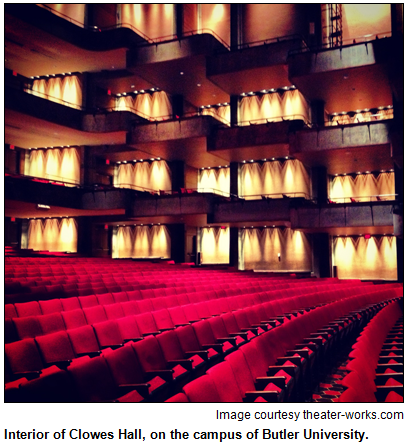 The massive renovation of the Coliseum that's currently underway began in October 2012. Part of the project, the new Youth Arena ice rink, opened this week. After the fully renovated Coliseum reopens next August, it is expected to host everything from major livestock shows and the concert series during the Indiana State Fair to high school graduation ceremonies and touring national concerts.
The massive renovation of the Coliseum that's currently underway began in October 2012. Part of the project, the new Youth Arena ice rink, opened this week. After the fully renovated Coliseum reopens next August, it is expected to host everything from major livestock shows and the concert series during the Indiana State Fair to high school graduation ceremonies and touring national concerts.
Fun facts:
- The Coliseum cost $1.2 million to build in 1939. Initially, its major purpose was to be a livestock pavilion. Construction employed hundreds of Hoosiers, with the federal government picking up 55 percent of the cost because it was a WPA project.
- According to the Indianapolis Monthly article, actress Faye Dunaway made multiple demands before a 1997 performance at Clowes. She also commandeered a dressing room intended for 30 people.
- The largest crowd for a sports event at the Coliseum occurred in 1951. Nearly 13,680 spectators packed the venue to watch the Harlem Globetrotters.
Roadtrip: Crispus Attucks Museum in Indianapolis
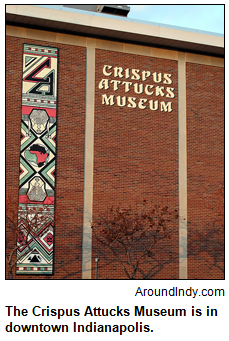 Guest Roadtripper is Kisha Tandy of the Indiana State Museum, who suggests that we take the Roadtrip to the Indianapolis Public Schools Crispus Attucks Museum, located at Attucks High School in downtown Indianapolis.
Guest Roadtripper is Kisha Tandy of the Indiana State Museum, who suggests that we take the Roadtrip to the Indianapolis Public Schools Crispus Attucks Museum, located at Attucks High School in downtown Indianapolis.
Crispus Attucks (c. 1723-1770) was an African American who is believed to be have been the first person shot to death by the British during the Boston Massacre prior to the Revolutionary War.
The Crispus Attucks Museum is located at 1140 Dr. Martin Luther King Jr. St. on the newly renovated campus of the historic Crispus Attucks Medical Magnet High School.
The museum is filled with historic treasures that date back to the late 19th-century African American experience in Indianapolis, and particularly that of the first all-black high school in the state of Indiana.
History Mystery
During the American Basketball Association era, when the Indiana Pacers began thrilling spectators at the State Fairgrounds Coliseum, a future star on the team was causing a sensation at the high school level.
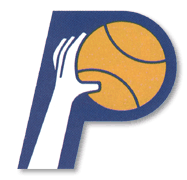 Born in Indianapolis, he led a local high school team to an unbeaten season and the state championship before being named "Mr. Basketball" of 1969 by the Indianapolis Star.
Born in Indianapolis, he led a local high school team to an unbeaten season and the state championship before being named "Mr. Basketball" of 1969 by the Indianapolis Star.
He went on to hoops triumphs at Indiana University before becoming an outstanding pro player in the 1970s, beginning with the Indiana Pacers of the ABA. The hometown star eventually helped take the team to championship titles in the ABA league.
Question: Who is he?
The call-in number is (317) 788-3314. Please do not call into the show until you hear Nelson pose the question on the air, and please do not try to win the prize if you have won any other prize on WICR during the last two months.
The prize is admission for four to the Indiana Experience at the Indiana History Center, and a pair of tickets to the Indiana State Museum, courtesy of Visit Indy.
Your Hoosier History Live! team,
Nelson Price, host and creative director
Molly Head, producer, (317) 927-9101
Richard Sullivan, webmaster and tech director
Pam Fraizer, graphic designer
Garry Chilluffo, creative consultant
Michele Goodrich, Jed Duvall, grant consultants
Joan Hostetler, photo historian
Dana Waddell, volunteer-at-large
www.hoosierhistorylive.org






Please tell our sponsors that you appreciate their support: Indiana Authors Award | Indiana Historical Society | Lucas Oil | Re/Max Metro | Story Inn | The Fountain Square Theatre Building

 Acknowledgments to Print Resources, Monomedia, Indiana Humanities, Visit Indy, WICR-FM, Fraizer Designs, Heritage Photo & Research Services, Derrick Lowhorn and many other individuals and organizations. We are an independently produced program and are self-supporting through organizational sponsorships, grants and through individual tax-deductible contributions through Indiana Humanities. We do not receive any government funding. Visit our website to learn how you can support us financially. Also, see our Twitter feed and our Facebook page for regular updates.
Acknowledgments to Print Resources, Monomedia, Indiana Humanities, Visit Indy, WICR-FM, Fraizer Designs, Heritage Photo & Research Services, Derrick Lowhorn and many other individuals and organizations. We are an independently produced program and are self-supporting through organizational sponsorships, grants and through individual tax-deductible contributions through Indiana Humanities. We do not receive any government funding. Visit our website to learn how you can support us financially. Also, see our Twitter feed and our Facebook page for regular updates.
Oct. 19 show
Rabbi Sandy Sasso, pioneer for women clergy
Nearly 40 years ago, she was ordained as the country's first woman rabbi from the Jewish Reconstructionist movement. When Sandy Eisenberg Sasso and her husband, Dennis Sasso, were hired at Congregation Beth-El Zedeck in Indianapolis in 1977, they also became the world's first husband and wife rabbi team to serve a congregation jointly.
Earlier this year, Sandy Sasso retired as senior rabbi at the synagogue, but her career continues as an author of best-selling books for children, a civic leader and a speaker known for her storytelling gifts.
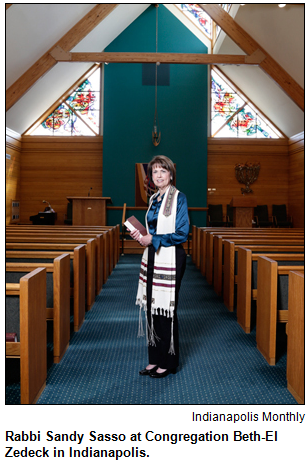 She also soon will become director of the Religion, Spirituality and Arts Initiative under the auspices of the Butler University Center for Faith and Vocation. When Sandy became a rabbi in 1974, only one other American woman, from a different Jewish movement, had been ordained.
She also soon will become director of the Religion, Spirituality and Arts Initiative under the auspices of the Butler University Center for Faith and Vocation. When Sandy became a rabbi in 1974, only one other American woman, from a different Jewish movement, had been ordained.
Her children's books - beginning with God's Paintbrush (Jewish Lights Publishing) in 1994 - are sold around the world and have been translated into German, Italian, Spanish, Hebrew and other languages. She says she became an author after she could not find faith-oriented books for her son and daughter when they were children.
Now a grandmother, Sandy Sasso will join Nelson in studio for a show about her trailblazing career and multi-faceted life as one of the best-known women in central Indiana.
"I read of men's struggles with God, but not women's," Sandy is quoted as saying in 19 Stars of Indiana: Exceptional Hoosier Women (IU Press, 2009), a book of profiles by Michael S. Maurer. "No one was answering my questions. In fact, no one was asking them."
She was referring to her growing interest in becoming a rabbi during her youth in Philadelphia, her home town. Sandy and Dennis Sasso were both just 31 years old when they were chosen to lead Beth-El Zedeck, 600 W. 70th St., and made history.
Sandy went on to earn a doctorate from Christian Theological Seminary and has received honorary doctorates from several Indiana colleges. Her latest book, to be titled Creation's First Light, is expected to be published later this fall. Her books for children include God Said Amen and For Heaven's Sake, both published by Jewish Lights.
History nugget: In 2002, Sandy was the editor of Urban Tapestry: Indianapolis Stories (IU Press), a collection of insights and essays about the Hoosier capital. Contributing writers included our host, Nelson.
© 2013 Hoosier History Live! All rights reserved.